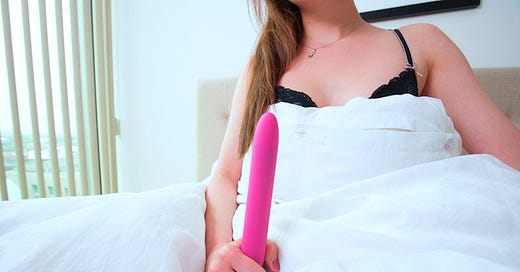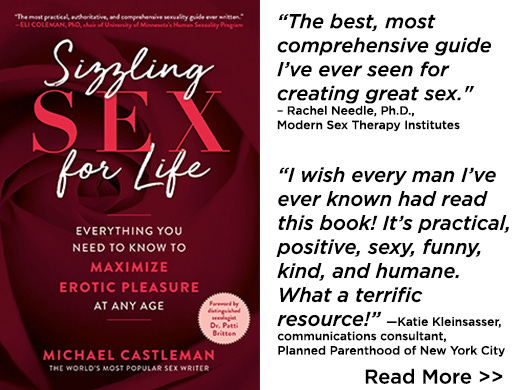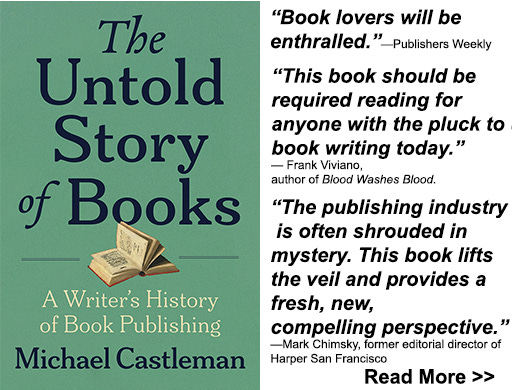The Strange History of Vibrators
Women's sexual pleasure was the furthest thing from the minds of the male doctors who invented vibrators almost two centuries ago.
Mention vibrators, and most people immediately think of women’s sexual pleasure. And no wonder: An estimated one-third of adult American women now own at least one. Clitoral stimulation with vibrators produces orgasm reliably even in women who have difficulty experiencing them in other ways. No wonder that women who use vibrators consistently report sexual enhancement in both solo and partner sex.
But ironically, women's sexual pleasure was the furthest thing from the minds of the male doctors who invented vibrators almost two centuries ago. They were interested in a labor-saving device to spare their hands the fatigue they developed giving handjobs to a steady stream of 19th century ladies who suffered from “hysteria,” a vaguely defined ailment easily recognizable today as sexual frustration. Therein hangs a strange tale that provides quirky insights into both the history of sex toys, and cultural notions about women’s sexuality.
Until the 20th century, American and European men—including physicians—believed that women did not experience sexual desire or pleasure. They believed that women were simply fleshy receptacles for male lust and that intercourse culminating in male ejaculation was all women needed to experience satisfaction. Women were socialized to believe that “ladies” had no sex drive, and merely put up with sex in order to keep their husbands happy and have children.
Not surprisingly, these beliefs led to a great deal of sexual frustration on the part of women, who complained to doctors of anxiety, sleeplessness, irritability, nervousness, erotic fantasies, feelings of heaviness in the lower abdomen, and wetness between the leg. This syndrome became known as “hysteria,” from the Greek for uterus.
Women’s complaints of hysteria date back to the 13th century. Doctors of that era understood that women had libidos and advised them to relieve their sexual frustration with dildos. In the 16th century, physicians told married hysterics to encourage their husbands’ lust. Unfortunately, that probably didn't help too many wives because modern sexuality research clearly shows that few women experience orgasm consistently from intercourse. The vast majority of women need direct clitoral stimulation, and most intercourse doesn’t supply much. For hysteria unrelieved by husbandly lust, and for widows, and single and unhappily married women, doctors advised horseback riding, which, for some, provided enough clitoral stimulation to trigger orgasm. But many women found little relief from horseback riding, and by the 17th century, dildos were less of an option because the arbiters of decency had succeeded in demonizing masturbation as “self-abuse.”
Fortunately, a reliable, socially acceptable treatment appeared. Doctors or midwives applied vegetable oil to women’s genitals and then massaged them with one or two fingers inside and the heel of the hand pressing against the clitoris. With this type of massage, hysterical women had orgasms and experienced sudden, dramatic relief from hysteria. But doctors didn’t call women’s climaxes orgasms. They called them “paroxysms” orgasm because everyone knew that women were incapable of sexual feelings, so they could not possibly experience orgasm.
By the early 19th century, physician-assisted paroxysm was firmly entrenched in Europe and the U.S., and proved a financial godsend for many doctors. At the time, the public viewed physicians with tremendous distrust. Medicine was, at best, primitive. Most doctors had no scientific training. And their standard treatment, bleeding, killed more people than it helped. But thanks to genital massage, hysteria was one of the few conditions doctors could treat successfully, and it produced large numbers of grateful women who returned faithfully and regularly, eager to pay for additional treatment. For more on the 19th-century treatment of hysteria, read The Road to Wellville by T.C. Boyle or see the movie.
Unfortunately for doctors, hysteria treatment had a downside—achy, cramped fingers and hands from all that massage. In medical journals of the early 1800's, doctors lamented that treating hysterics taxed their physical endurance. Chronic hand fatigue meant that some doctors had trouble maintaining the treatment long enough to produce the desired result.
Necessity being the mother of invention, physicians began experimenting with mechanical substitutes for their hands. They tried a number of genital massage contraptions, among them water-driven gadgets (the forerunners of today's shower massage devices), and pumping, steam-driven dildos. But the machines were cumbersome, messy, often unreliable, and sometimes dangerous.
Then in the late nineteenth century, electricity entered American homes, and the first electric appliances appeared: the electric fan, toaster, tea kettle, and sewing machine. In 1880, more than a decade before the invention of the electric iron and vacuum cleaner, the enterprising English physician Dr. Joseph Mortimer Granville patented the electromechanical vibrator.
Vibrators, both plug-in and later battery-powered, were immediate hits. They produced paroxysm quickly, safely, reliably, and as often as women desired. By the dawn of the 20th century, doctors had lost their monopoly on hysteria treatment as women began buying the devices for themselves, thanks to advertisements in popular women’s magazines, among them: Needlecraft, Women's Home Companion, and the Sears & Roebuck Catalogue, that era’s Amazon.com.
However, to make vibrators’ socially acceptable, their real purpose was disguised. They were called “personal massagers” (and still are in some catalogues today). But discerning women knew very well what “massagers” were all about. One 1903 advertisement in the Sears Catalogue touted a popular massager as “a delightful companion … all the pleasures of youth … will throb within you....”
Electricity gave women home vibrators, but within a few decades, electricity almost took them away. Movies were invented in 1890 and by 1891, pornography was being filmed. During the 1920s, vibrators began showing up in stag films, which stripped the devices of their disguise and quickly made them social unacceptable. Vibrator advertisements disappeared from the consumer media, and well into the 1970’s vibrators were hard to find. That changed when Hitachi introduced its Magic Wand, currently the world’s most popular vibrator.
Today, dozens of models are available: plug-in, battery powered, waterproof, large, small, and tiny travel models (bullets). One-third of adult American women own at least one vibrator, many own several, and about half of women who own vibrators use them in partner sex. How odd that we owe it all to physician fatigue.
[scroll down for related Questions & Answers]
Reference
Maines, Rachel. The Technology of Orgasm: “Hysteria," “The Vibrator, and Women's Sexual Satisfaction.” Johns Hopkins University Press, 1999.
Questions & Answers
I’ve answered more than 12,000 sex questions from people around the world, of all ages, for free. Here are a few that relate to the topic of this post.
If you’d like to ask me a question of your own, please go to GreatSexGuidance.com.
My wife loves to have a vibrator in her ass but won’t let me to enter her there. I would love to try it with her. How do I convince her to allow this? Read my respose…
My husband and I like to play with vibrators and dildos during sex. Now we’re talking about using a rather large vibrator that will stretch my vagina. But I’m concerned. Is the stretching is permanent? Or, will my vagina go back to its normal size? Read my respose…
I've heard that vibrators, if you use them a long time, can make my clitoris less sensitive. Any truth to this? Read my respose…
I’ve been with my girlfriend for three and a half years. I’m still very young so we’re both of each other’s firsts. We’ve been having sex now for about 2 years and I have only helped her orgasm once. I’ve read articles online everywhere and read online forums for advice all the time, I’ve read some books about the female orgasm and I still have little hope. Read more and my respose…
Do you have any suggestions for vibrator use in an elderly couple—I’m late 60’s, he’s early 70’s? Read my respose…







Like many others who bought Rachel Maine's book, I believed this theory about the history of the vibrators. However, I recently learned that this theory has been discredited. https://journalofpositivesexuality.org/wp-content/uploads/2018/08/Failure-of-Academic-Quality-Control-Technology-of-Orgasm-Lieberman-Schatzberg.pdf
Also, this was recently published:
https://open.substack.com/pub/carlynbeccia/p/did-doctors-really-masturbate-their?r=5eu30&utm_campaign=post&utm_medium=email
I have never ever in my life been able to have an orgasm with just fingers or mouth. I have to have dick (combined with grinding) or I have to have a vibrator pressed against my clit. Believe me, I've tried everything possible, and so have all my partners. I have slept with so many people I don't even remember them all -- it's not a matter of just not having ever met somebody who knows that they're doing.